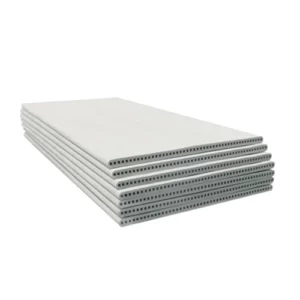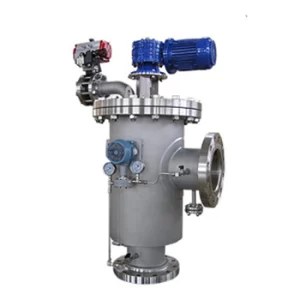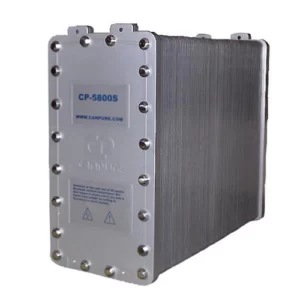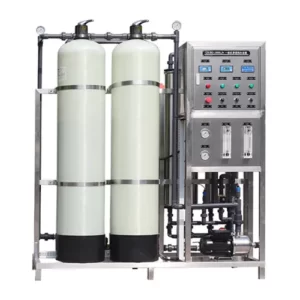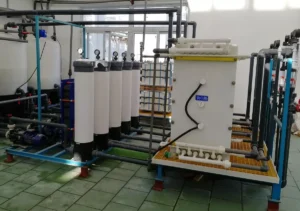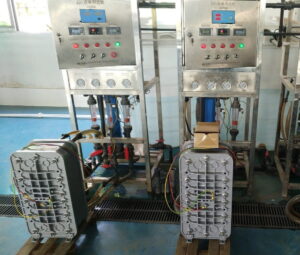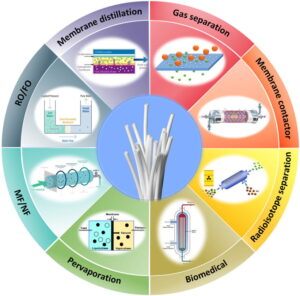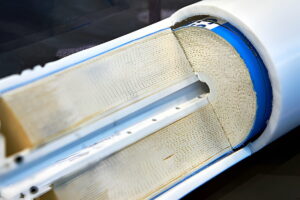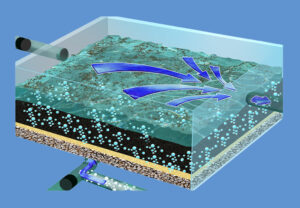Electrodeionization (EDI) modules represent a cornerstone in modern water treatment technologies, offering a chemical-free, cost-effective solution for producing ultrapure water. As the demand for high-purity water in industries such as pharmaceuticals, power generation, and electronics continues to rise, maintaining EDI modules cannot be overstated. Proper maintenance ensures these systems’ longevity, efficiency, and reliability, ultimately safeguarding the quality of water produced. This comprehensive guide delves into the best practices for maintaining EDI modules, ensuring your water treatment system operates at its peak performance.
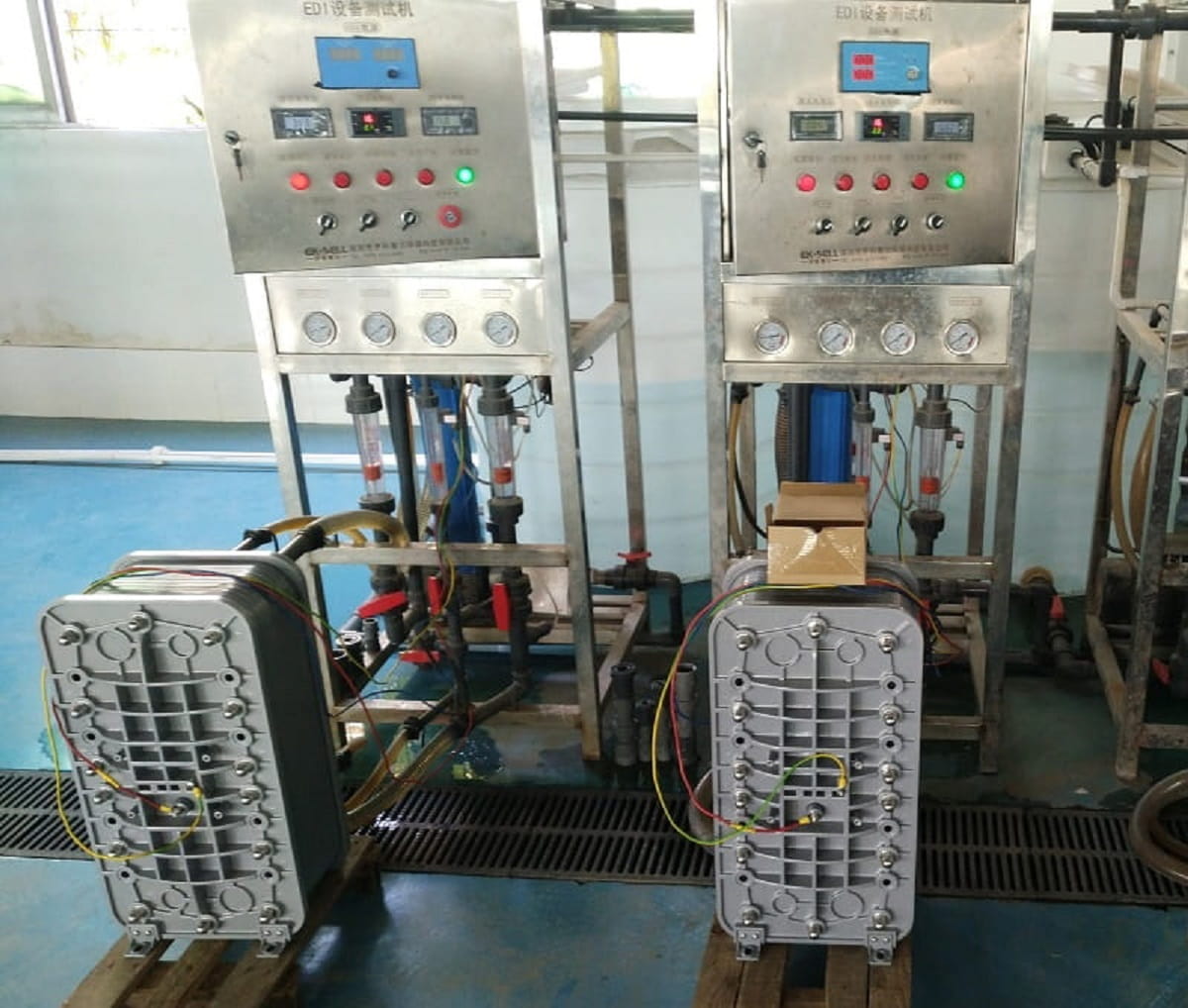
Understanding EDI Modules
Electrodeionization (EDI) is a sophisticated water purification technology that combines semi-permeable membrane technology with ion exchange media to provide a high-efficiency demineralization process. Unlike traditional ion exchange systems, EDI does not require chemical regenerants, making it an environmentally friendly and cost-effective solution for generating ultrapure water. But what makes EDI modules critical to this process, and why is their maintenance non-negotiable?
What is an EDI Module?
An EDI module is the core component of an EDI system, housing the ion-exchange resins and membranes that facilitate the removal of ions from water. These modules are designed to purify water continuously, relying on an electric current to regenerate the ion exchange resins, thus eliminating the need for chemical regeneration. This continuous operation underlines the importance of regular maintenance to prevent fouling, scaling, and other issues that could impair the module’s performance.
How Does It Work?
The EDI process involves the passage of water through a series of compartments within the EDI module, separated by ion-exchange membranes. Under the influence of an electric field, ions in the water are attracted to and move through the membranes, leaving behind purified water. The ion-exchange resins within the module enhance the ion removal efficiency and help regenerate the resins continuously, eliminating the downtime associated with traditional ion-exchange processes.
The Significance of Maintenance
Maintaining an EDI module is crucial for several reasons. Firstly, it ensures the consistent production of high-purity water, essential for industries that rely on ultrapure water. Secondly, regular maintenance prevents the buildup of contaminants that can reduce the efficiency of the EDI process or damage the module. Finally, proactive maintenance extends the lifespan of the EDI module, reducing the need for costly replacements and ensuring the system operates cost-effectively over time.
By understanding the function and importance of EDI modules, it becomes clear why maintaining these components is essential for the longevity and efficiency of water treatment systems. Next, we will explore common issues affecting EDI modules and how regular maintenance can prevent these problems.
Common Issues with EDI Modules
Maintaining an EDI module is critical to ensure the continuous production of ultrapure water. However, several common issues can arise, affecting the performance and efficiency of the EDI system. Understanding these problems is the first step toward effective maintenance and troubleshooting.
Scaling and Fouling
Scaling occurs when dissolved minerals in the feed water precipitate on the surfaces of the EDI module, particularly on the ion exchange membranes and resin beads. Common culprits include calcium carbonate and magnesium silicate. Scaling reduces the efficiency of ion exchange and water flow, leading to decreased water purity and increased energy consumption.
Fouling is caused by accumulating organic compounds, microorganisms, and particulate matter on the module’s components. This impedes water flow and can lead to the degradation of membranes and resins. Fouling is particularly problematic because it can introduce contaminants into the purified water and reduce the overall effectiveness of the EDI process.
Electrical Problems
EDI modules rely on a continuous electrical current to regenerate the ion-exchange resins. Issues such as fluctuating power supply, incorrect voltage settings, or electrical shorts can disrupt this process, leading to incomplete ion removal and reduced water quality. Regular electrical maintenance and monitoring are essential to prevent these issues.
Membrane and Resin Degradation
Over time, the ion-exchange membranes and resins within the EDI module can degrade due to chemical exposure, mechanical stress, or prolonged use. This degradation affects the module’s ability to remove ions from the water effectively. Early detection and replacement of worn-out components are crucial to maintaining the system’s performance.
Preventive Maintenance Strategies
A comprehensive preventive maintenance strategy is essential to address and prevent the common issues outlined above. Here are key practices to ensure the longevity and efficiency of your EDI module:
Regular Monitoring and Diagnostics
- Conductivity and Resistivity Measurements: Regularly measure the conductivity and resistivity of the inlet and outlet water to monitor the performance of the EDI module. Significant changes can indicate scaling, fouling, or membrane issues.
- Pressure Differential Monitoring: Monitor the pressure differential across the EDI module to detect clogging or fouling early.
- Electrical System Checks: Ensure the electrical supply to the EDI module is stable and within the recommended parameters to prevent electrical problems.
Cleaning Protocols
- Chemical Cleaning: Implement a regular chemical cleaning schedule to remove scaling and fouling from the module. The choice of cleaning chemicals should be based on the types of contaminants present.
- Physical Cleaning: In some cases, physical cleaning methods such as flushing with high-purity water can help remove loose particles and reduce fouling.
System Optimization for Longevity
- Feed Water Pre-Treatment: Improve feed water quality through pre-treatment processes to reduce the risk of scaling and fouling.
- Operational Parameter Optimization: Adjust flow rates, electrical settings, and other operational parameters to optimize the performance and lifespan of the EDI module.
Implementing these preventive maintenance strategies can significantly reduce the likelihood of common EDI module issues and ensure the system operates efficiently over its intended lifespan. Next, we will provide a step-by-step maintenance guide to further assist in maintaining your EDI module effectively.
Step-by-Step Maintenance Guide
Maintaining your EDI module is essential for ensuring optimal performance and longevity of your water treatment system. Here’s a detailed guide to help you through the process:
Pre-Cleaning Checks and Preparation
- System Shutdown: Safely shut down the EDI system according to the manufacturer’s instructions to prevent damage or safety issues.
- Visual Inspection: Conduct a thorough visual inspection of the EDI module for any signs of physical damage, leaks, or wear and tear on the membranes and connections.
- Record Baseline Performance Data: Document the system’s performance data, including conductivity, resistivity, pressure differentials, and flow rates, for future comparison.
Cleaning and Sanitization Process
- Determine Cleaning Necessity: Based on the performance data and visual inspection, decide whether chemical cleaning, physical cleaning, or both are necessary.
- Chemical Cleaning:
- Prepare the cleaning solution according to the manufacturer’s recommendations, typically involving dilute acids for descaling and bases for organic fouling.
- Circulate the cleaning solution through the EDI module, allowing sufficient contact time for the chemicals to dissolve or dislodge the contaminants.
- Rinse the system thoroughly with high-purity water to remove any residual cleaning agents.
- Physical Cleaning:
- A high-flow rinse with purified water can help remove loose particles for physical fouling.
- In some cases, gentle manual cleaning of accessible parts may be required, following the manufacturer’s guidelines to avoid damage.
Post-Cleaning Checks
- Rinse and Return to Operation: After cleaning, rinse the system thoroughly and gradually return it to regular operation, monitoring for any signs of leaks or performance issues.
- Performance Evaluation: Once the system is operational, re-evaluate the performance metrics recorded before cleaning. Compare the data to assess the effectiveness of the maintenance activities.
- Documentation: Update maintenance logs with details of the cleaning process, observations, and post-cleaning performance data. This record is crucial for tracking the system’s health and planning future maintenance.
Troubleshooting Common Problems
Even with regular maintenance, you may encounter issues with your EDI module. Here are solutions to some common problems:
Addressing Reduced Efficiency
- Cause: Often due to scaling, fouling, or membrane degradation.
- Solution: Conduct a thorough cleaning as described above. If efficiency does not improve, inspect membranes, resins for damage and consider replacement.
Handling Electrical Anomalies
- Cause: Fluctuations in power supply or incorrect settings can disrupt regeneration.
- Solution: Verify electrical connections and settings. Ensure the power supply is stable and matches the specifications of the EDI module.
Dealing with Chemical Imbalances
- Cause: Improper feed water chemistry can lead to excessive scaling or fouling.
- Solution: Adjust the pre-treatment process to optimize feed water quality. Regular monitoring of feed water chemistry is essential to prevent imbalances.
EDI Module Maintain Guide
To ensure your EDI module remains in peak condition, adhere to the following advanced tips:
- Regularly Update Maintenance Logs: Detailed records help identify patterns and predict when maintenance is needed, preventing unexpected downtime.
- Stay Informed on Latest Practices: Advances in EDI technology and maintenance strategies are ongoing. Stay informed to ensure your maintenance practices are up-to-date.
- Professional Assessments: Periodically, have a professional assess your EDI system. They can offer insights and identify issues that may not be apparent during routine maintenance.
Conclusion
Maintaining an EDI module is critical to managing a water treatment system. Regular, proactive maintenance ensures the consistent production of ultrapure water and extends the lifespan of your EDI system, offering significant long-term savings and operational efficiency. Following the guidelines outlined in this comprehensive guide, you can achieve optimal performance from your EDI module and ensure your water treatment system remains reliable and effective.
Remember, the key to successful EDI module maintenance is a combination of regular checks, thorough cleaning, and timely troubleshooting. With these practices in place, you can maintain the high performance of your EDI system and support the critical operations that depend on it.


